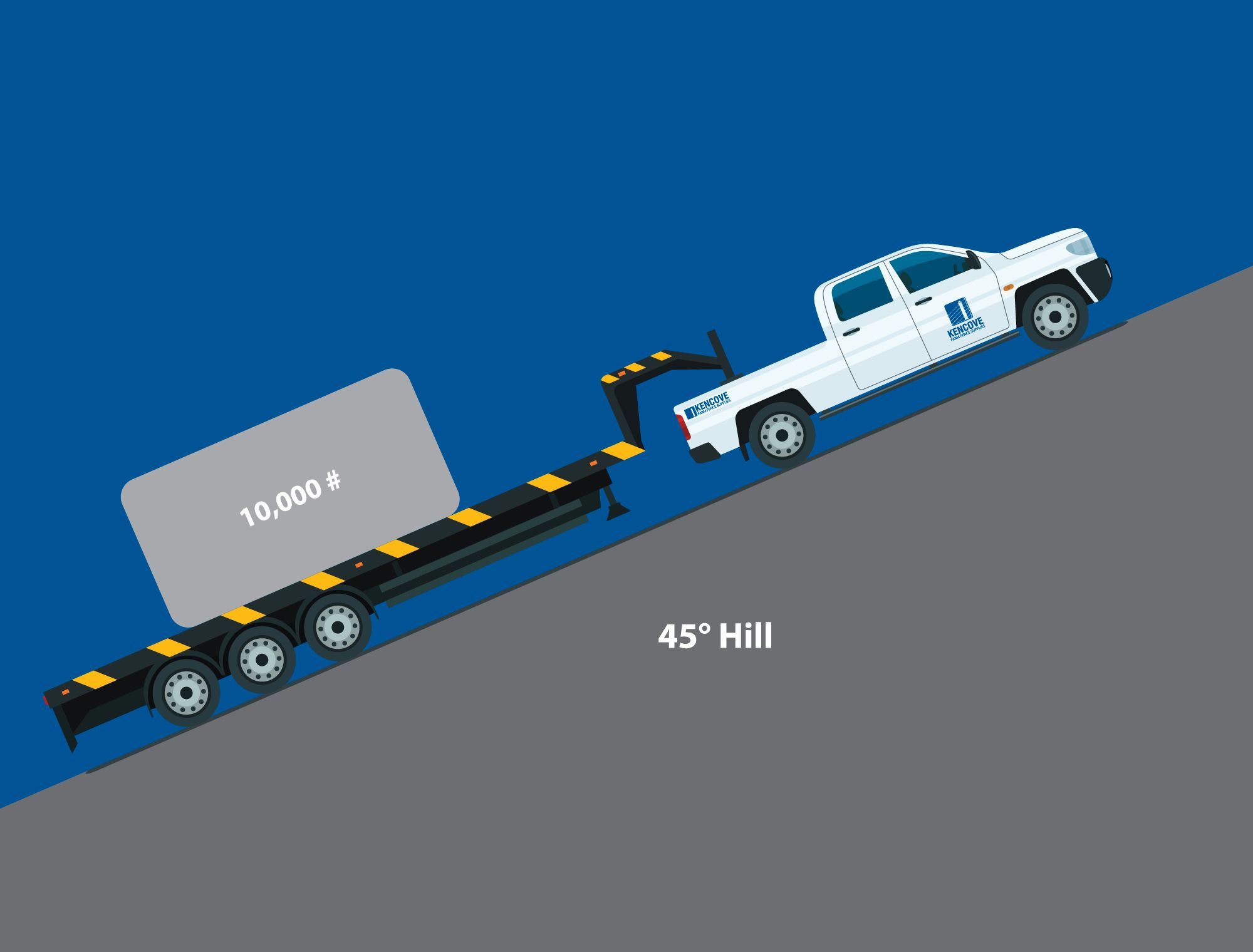When determining the electrical needs of your fence system it is important to recognize the difference between volts and joules. A volt is a unit of measure assigned to the electrical potential or voltage across a conductor. However a joule is a unit of energy or work done, to move an electric charge through an electric potential. The following are mathematical understandings of volts and joules, which later will be put into layman's terms according to choosing the correct energizer.

The difference between volts and joules can be simplified by remembering that joules are the energy used to create voltage on the fence line. Whereas, voltage is the speed at which the current is moving along the line. The diagram below is an excellent example of volts and joules.
Joule = Truck
Hill = Fence
Speed = Voltage
Weight = Ohms/Weed load/Resistance

When selecting a truck to haul livestock, you must first determine the heaviest load that the truck will need to pull. The truck must be capable of pulling the trailer and stock successfully. Choosing the appropriate energizer for your fence system is a very similar concept. Consider that the voltage is carried by the speed at which the charge travels through the fence line and joules will be created by the energizer according to the watts per second of output. In an electric fence system, a high voltage is important for making sure that an electrical charge can find its way through the hair on the animals it is intended to contain or exclude. The more or thicker the hair, the greater the voltage required. The higher the voltage, the greater the charged wire's ability is to shock the animal that happens to touch the wire. The longer the fence line (mileage) and the heavier the weed load or resistance on the fence, the more output joules the energizer will need to maintain a volt range between 5,000 and 10,000 volts for good stock control.
Recommended Voltage on Fence Line for different animal types Horses: 2,500 Volts Cattle: 3,500 Volts Sheep/Goats: 4,500 Volts Pigs: 5,000 Volts Predators: 5,000-10,000 Volts Deer: 5,000-10,000 Volts Pets: 3,000 Volts
"It is always best to take the path of least resistance." This is exactly what to keep in mind when building and choosing an energizer for your fence system. Resistance will decrease voltage on your fence line, because each energizer only has a specified amount of output joules (energy) to maintain the voltage along the conductor (fence line). When resistance begins to diminish output joules the voltage falls low enough that it becomes ineffective because it cannot bridge or arc across the insulation of the hair and hide of the animal. The following are common causes of resistance:
- Weed Load
- Induction- Stray voltage bridging to neutral wires, gates, diagonal braces wires, etc.
- Bad Connections
- Multiple Splices
- Broken Insulators
- Type of wire: Poli-wire, Tape, Ribbon, High Tensile, etc.
- Rusty Wire

Generally rule of thumb is a minimum of 1 joule of output per mile of fence, to maintain a secure voltage. Kencove is willing to step outside the box and state, "This is not enough power once you do the math!" A mile is equal to 5,280 feet, which in turn is equal to the perimeter of 40 acres. Would you want a 1 joule unit to power your multi-strand 40 acre paddock? The easy answer is "NO". Kencove would recommend at least a 6 joule unit with an open circuit voltage of 9,500 volts. Understand that if your fence line has numerous sources of voltage leakage, you will need to choose an energizer with a higher joule rating. The truth of the matter is that you can never have too much power. When training livestock having too little power is no different than having no power at all and the fence could actually causes harm to the animal.
Commonly energizer manufactures and dealers overestimate the amount of fence an energizer will securely power. In today's world it is easy to fall for attractive ads and eye appealing packaging, so when purchasing an energizer look closely at the details.
Animal Recommended Voltage Horses: 2,500 Volts Cattle: 3,500 Volts Cow/Calf Operations: 4,000 Volts Sheep/Goats/Heavy Haired Animals: 4,500 Volts
Many manufactures rate their energizers. A unit which is rated as a fifty-mile unit only means that it can essential power 50 miles of a weed free, well insulated, single strand wire. You will be disappointed if you select an energizer based on miles of fence line. Ultimately, the output joules of the energizer should be the selling point. If only stored joule information is available, you can estimate that output joules are about 70% of the joules stored within the units capacitors.
Remember, that the energizer is the heart of your fence system. It should be accurately sized according to what type of animals are being contained or excluded, the length of the fence line, and how long it could potential be in the future, as well as possible resistance on the fence. This is a basic description of the relationship between volts and joules, and the effectiveness of your electric fence. Kencove hopes that through your comments and input the readers of this Blog will be able to have greater insight into the proper energizer for their fence.




